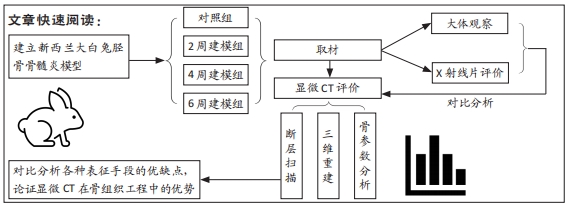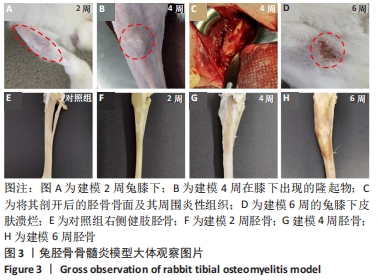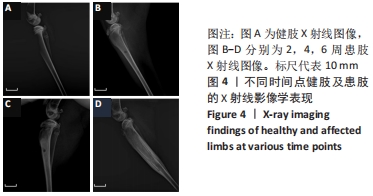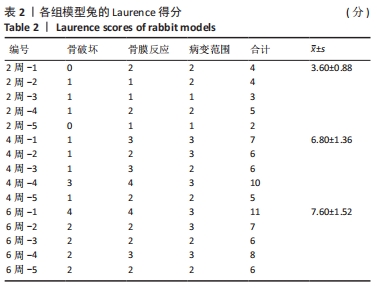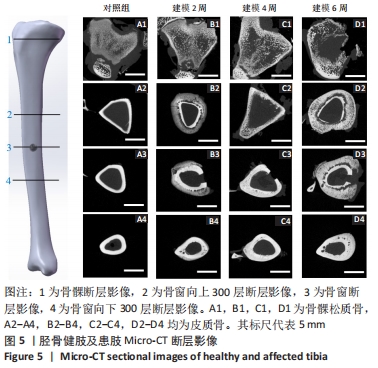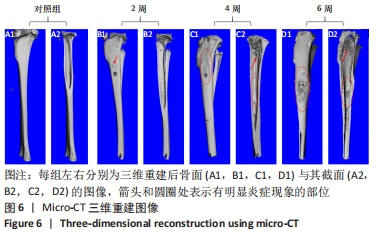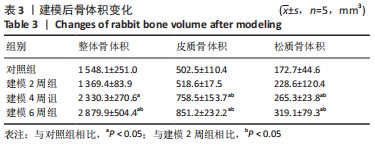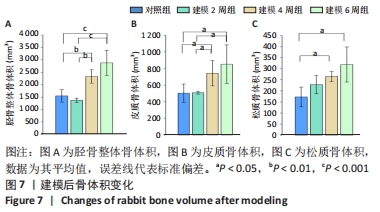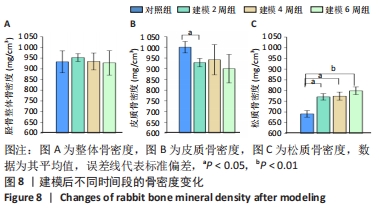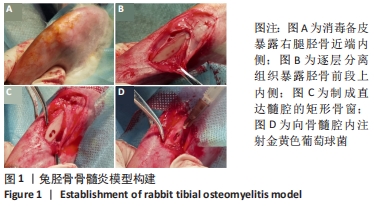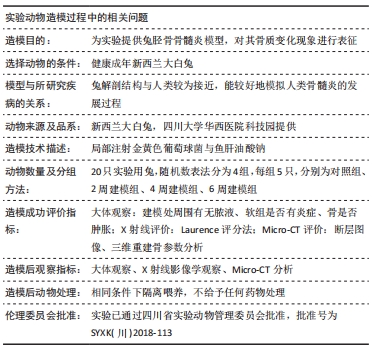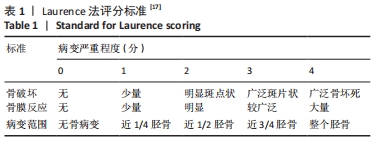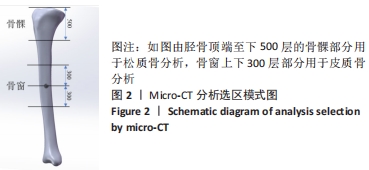[1] 黄金亮, 唐辉, 徐永清. 骨髓炎流行病学[J]. 国际骨科学杂志,2011, 32(2):26-27.
[2] AGAJA SB, AYORINDE RO. Chronic osteomyelitis in Ilorin, Nigeria. S Afr J Surg . 2008;46(4):116-118.
[3] 吴二俊, 张树明. 慢性骨髓炎的治疗进展[J]. 临床医药实践,2016, 25(10):780-785.
[4] DELEO FR, CHAMBERS HF. Reemergence of antibiotic-resistant Staphylococcus aureus in the genomics era. J Clin Invest. 2009;119(9): 2464.
[5] KUBES JN, FRIDKIN SK. Factors affecting the geographic variability of antibiotic-resistant healthcare-associated infections in the United States using the CDC Antibiotic Resistance Patient Safety Atlas. Infect Control Hosp Epidemiol. 2019;40(5):597-599.
[6] MONACO M, PIMENTEL DE ARAUJO F, CRUCIANI M, et al. Worldwide Epidemiology and Antibiotic Resistance of Staphylococcus aureus//BAGNOLI F, RAPPUOLI R, GRANDI G. Staphylococcus aureus: Microbiology, Pathology, Immunology, Therapy and Prophylaxis. Cham; Springer International Publishing. 2017:21-56.
[7] SALGADO-PABÓN W, SCHLIEVERT PM. Models matter: the search for an effective Staphylococcus aureus vaccine. Nat Rev Microbiol. 2014; 12(8):585-591.
[8] HORST SA, HOERR V, BEINEKE A, et al. A Novel Mouse Model of Staphylococcus aureus Chronic Osteomyelitis That Closely Mimics the Human Infection: An Integrated View of Disease Pathogenesis. Am J Pathol. 2012;181(4):1206-1214.
[9] HASSANI BESHELI N, MOTTAGHITALAB F, ESLAMI M, et al. Sustainable Release of Vancomycin from Silk Fibroin Nanoparticles for Treating Severe Bone Infection in Rat Tibia Osteomyelitis Model. ACS Biomater Sci Eng. 2017;9(6):5128-5138.
[10] 鲁锋,严雪征,马术友,等. 加替沙星-聚癸二酸酐局部缓释系统预防兔骨髓炎[J]. 中国组织工程研究,2014,18(21):3355-3360.
[11] 刘飞,崔宇韬,刘贺. 局部抗生素递送系统治疗骨髓炎的优势与问题[J]. 中国组织工程研究,2021,25(4):128-134.
[12] CLARK DP, BADEA CT. Advances in micro-CT imaging of small animals. Physica Medica. 2021;88(6):175-192.
[13] 郭磊, 赵宏斌. 显微CT在骨科研究中的应用优势[J]. 昆明医学院学报,2012,33(S1):274-276.
[14] 李亮亮. 兔慢性骨髓炎模型的建立及效果评价[J]. 安徽医药,2015, 19(12):2299-2301.
[15] 高翠芳, 李晓泉. 5%鱼肝油酸钠对慢性骨髓炎造模的影响[J]. 中医正骨,2002,14(9):12-13+63-64.
[16] HORN J, SCHLEGEL U, KRETTEK C, et al. Infection resistance of unreamed solid, hollow slotted and cannulated intramedullary nails : an in-vivo experimental comparison. J Orthop Res. 2010;23(4):810-815.
[17] DAHNERS LE, FUNDERBURK CH. Gentamicin-loaded plaster of Paris as a treatment of experimental osteomyelitis in rabbits. Clin Orthop Relat Res. 1987;(219):278-282.
[18] 王军, 毕龙, 白建萍, 等. 显微CT与组织切片技术在骨形态计量研究中的比较[J]. 中国矫形外科杂志,2017,223(5):381-384.
[19] 郭磊, 赵宏斌. 显微CT在骨科研究中的应用优势[J]. 昆明医科大学学报,2012,33(S1):274-276.
[20] 卞阳阳, 武子荃, 顾运涛, 等. 创伤后慢性骨髓炎的治疗进展[J]. 海南医学,2018,29(22):124-127.
[21] 袁承杰, 翁蔚宗, 周启荣, 等. 骨髓炎骨缺损动物模型构建研究进展[J]. 中华骨与关节外科杂志,2016,9(1):87-90+83.
[22] 李鼎鹏, 谢兴文, 汪付田, 等. 基于文献回顾分析动物骨髓炎模型制备方法的特点研究[J]. 中药药理与临床,2019,35(5):159-163.
[23] PERLMAN RL. Mouse Models of Human Disease: An Evolutionary Perspective. Evol Med Public Health. 2016;2016(1):170-176.
[24] PEARCE AI, RICHARDS RG, MILZ S, et al. Animal models for implant biomaterial research in bone: a review. Eur Cells Mater. 2007;13:1.
[25] NORDEN CW, MYEROWITZ RL, KELETI E. Experimental osteomyelitis due to Staphylococcus aureus or Pseudomonas aeruginosa: a radiographic-pathological correlative analysis. Br J Exp Pathol. 1980;61(4):451.
[26] 闻一新, 周田华, 徐永清, 等. 兔胫骨金黄色葡萄球菌慢性骨髓炎模型的制备[J]. 实用骨科杂志,2013,19(11):1001-1003.
[27] POULTSIDES LA, PAPATHEODOROU LK, KARACHALIOS TS, et al. Novel model for studying hematogenous infection in an experimental setting of implant-related infection by a community-acquired methicillin-resistant S. aureus Strain. J Orthop Res. 2008;26(10):1355-1362.
[28] 褚立涛, 郭国栋, 刘刚, 等. 兔胫骨创伤后骨髓炎动物模型的建立[J]. 医学研究生学报,2012,25(11):1160-1162.
[29] 李彦豪,李树新. 鱼肝油酸钠动脉栓塞的实验研究[J]. 中华放射学杂志,1987,21(6):357-360.
[30] 滕加文,梁学振,李梁.骨髓炎兔胫骨动物模型的建立与评价[J]. 中国现代药物应用,2017,11(16):194-197.
[31] 平小芳.骨髓炎的影像学诊断[J]. 中外医学研究,2010,8(19):91.
[32] FREEMAN TA, PATEL P, PARVIZI J, et al. Micro-CT analysis with multiple thresholds allows detection of bone formation and resorption during ultrasound-treated fracture healing. J Orthop Res. 2010;27(5):673-679.
[33] 李高团.不典型骨髓炎的X线,CT和MRI影像特点比较[J]. 深圳中西医结合杂志,2020,30(6):65-67.
[34] 邹梦晨,胡萍,罗祥蓉,等.糖尿病足骨髓炎的诊疗进展[J]. 国际内分泌代谢杂志,2018,38(4):257-261.
[35] 雷霆,刘傥,禹晓东,等.显微CT在骨科学中的应用[J].中国矫形外科杂志,2010,18(8):652-653.
[36] NASSER A, AZIMI T, OSTADMOHAMMADI S, et al. A comprehensive review of bacterial osteomyelitis with emphasis on Staphylococcus aureus. Microb Pathog. 2020;148:104431.
[37] ANA B, MM C, PJ D, et al. Staphylococcus aureus versus neutrophil: Scrutiny of ancient combat - ScienceDirect. Microb Pathog. 2019;131: 259-269.
[38] DYM H, ZEIDAN J. Microbiology of Acute and Chronic Osteomyelitis and Antibiotic Treatment. Dent Clin North Am. 2017;61(2):271-282.
[39] SACHA F, JEAN-PHILIPPE R, CéDRIC B, et al. Human Monocyte-Derived Osteoclasts Are Targeted by Staphylococcal Pore-Forming Toxins and Superantigens. Plos One. 2016;11(3):e0150693.
[40] 杜虎羽, 刘君, 郭志坚, 等. 应用Masquelet技术治疗跟骨骨髓炎的临床研究[J]. 中国矫形外科杂志,2017,25(15):1435-1437.
[41] 彭江, 汪爱媛, 孙明学, 等. Micro-CT在松质骨结构研究中的应用[J]. 中国矫形外科杂志,2005,13(11):859-861.
[42] 王法琪, 严亚波, 温鑫鑫, 等. 显微CT分辨率对松质骨微观结构及生物力学测量的影响[J]. 现代生物医学进展,2015,15(10):1877-1880.
[43] 周佳雁, 蒋晓红, 王龙. 以脓毒症首诊的2型糖尿病合并脊柱化脓性骨髓炎一例分析[J]. 临床误诊误治,2018,31(1):44-46.
|
